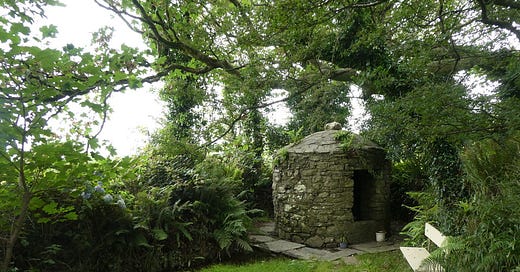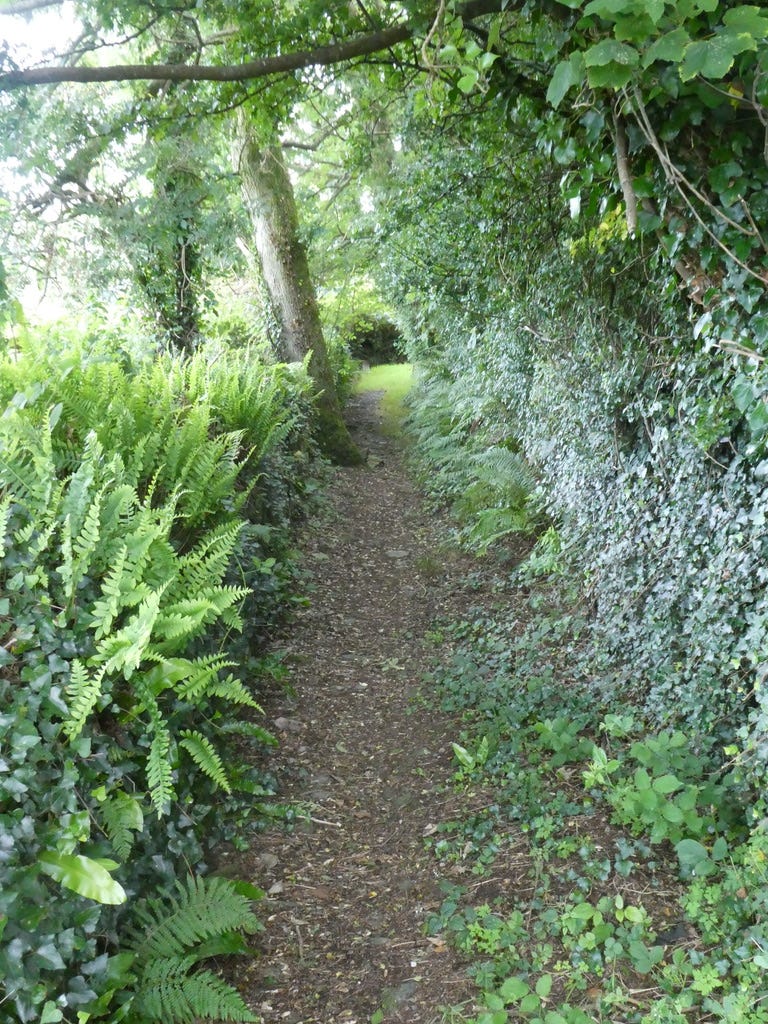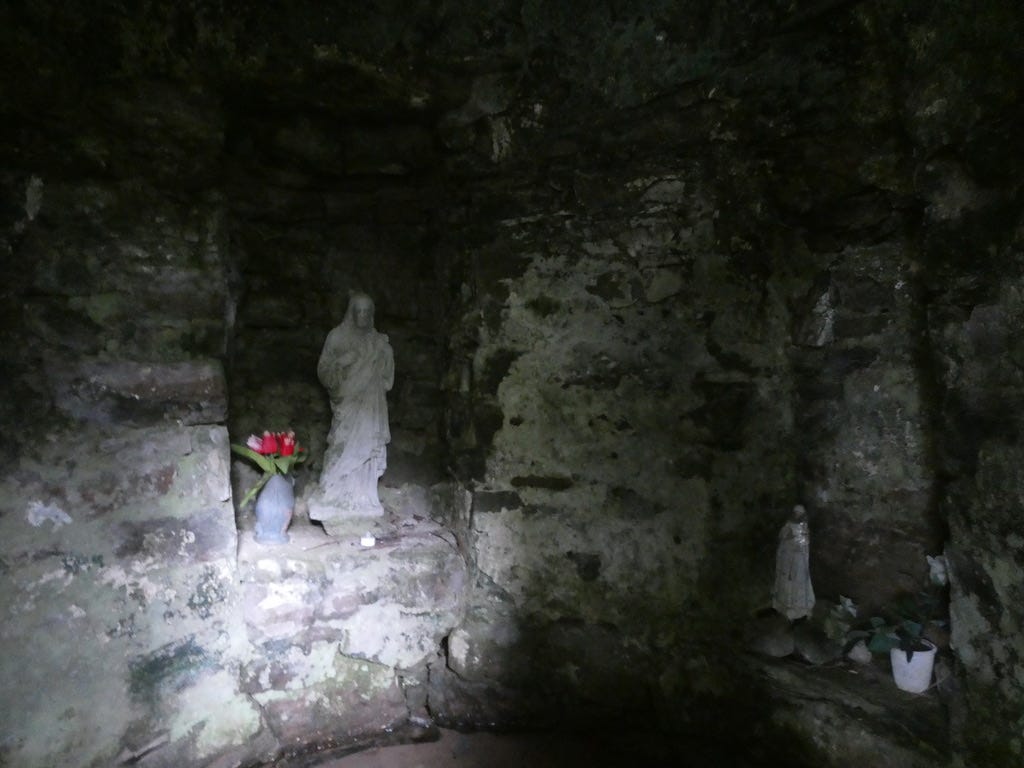Trinity Well, Rathclaren, County Cork
After last week’s atrocity, we surely need to find a holy well that can restore our faith in humanity. Luckily, down a silent little green lane in rural County Cork, we find one.
Trinity Well sits quietly down the end of this leafy boreen, which itself is just across the lane from the attractive Holy Trinity Church. The church has apparently been restored over the years from a formerly run-down state. The happy news this week is that the same thing happened to the well. Only this time, the restorers did a proper job.
They would have had quite a job on their hands, too, because according to our young school historians, this well was once cursed:
A well near Rathclarin, Ráth Cláirín, Kilbrittain was once walled and roofed round with flagstones. A door led into the well and seats were built inside. Round the well inside also was a path. Outside the well was another path enclosed too by a stone wall. On Trinity Sunday people came from far and near to pay ‘Rounds’ at this well. During the ‘rounds’ they walked round the outer path. Porter, whiskey etc. were sold in the vicinity that day and fights and brawls were common. A priest is said to have cursed the well and it has been abandoned since. Sometimes an eel which must not be touched appears in the water and then someone is cured.
Drunken fighting at ‘pattern days’ was quite a common occurrence around the country in the past. It’s one reason the official Church was always somewhat lary of the holy well tradition here. But it’s clear that, if this well was abandoned in the past, it has been taken in hand now. It’s a sweet, tidy, well-tended little site today.
At some point, presumably as part of the post-curse restoration project, a wellhouse was built. It’s an interesting one, because it’s built in the shape of a clochán, otherwise known, in English, as a ‘beehive hut’:
This is a traditional form of building from early Ireland, and one which is particularly associated with early Christianity here. At some of the earliest monastic sites, clocháns functioned as cells for the monks. This is perhaps most famously the case on Skellig Michael, the astonishing stone monastery from the early Christian era, built precipitously on a remote rock ten miles off the Kerry coast. Here’s a photo I took of the cells there when I visited a few years ago:
To appreciate life on the Skellig, you need to imagine living in one of these in midwinter, with the storms lashing, no heating at all, and only raw seagull eggs to eat. That’s what I call asceticism.
Anyway, the restorers of the Trinity Well seem to have had vernacular Irish architecture in mind when they built this wellhouse. Inside, we find a small, still pool, edged about with a square of stone:
And we find something else, too. You can see it in the photo above, and it’s something interesting and unusual. It ought not to be unusual, I suppose, given that holy wells in Ireland are Christian sites. And yet is it in fact strangely uncommon to find, at a well, an actual statue of Christ. Statuary at a holy well usually comes in one of two forms: a statue of the saint who the well is named for, or a statue of the Virgin Mary. Mary is associated with water. But this is a well named for the Trinity, and so Christ, this time, makes an appearance:
There’s something ghostly about His presence in there, floating above the water in that damp clochán. It’s quite a contrast to the trim, verdant scene outside. But then, holy wells are often like this. Beneath the surface, there is always something going on that you don’t expect. You can’t prepare for it. You just have to arrive, and see what you are offered.












“Beneath the surface, there is always something going on that you don’t expect. You can’t prepare for it. You just have to arrive, and see what you are offered”
This is a beautiful way to approach each day, each other, and the spiritual adventure we are all on.
Thank you Paul
Just once I hope you catch sight of one of these enchanted trout or eels said to abide in the wells!